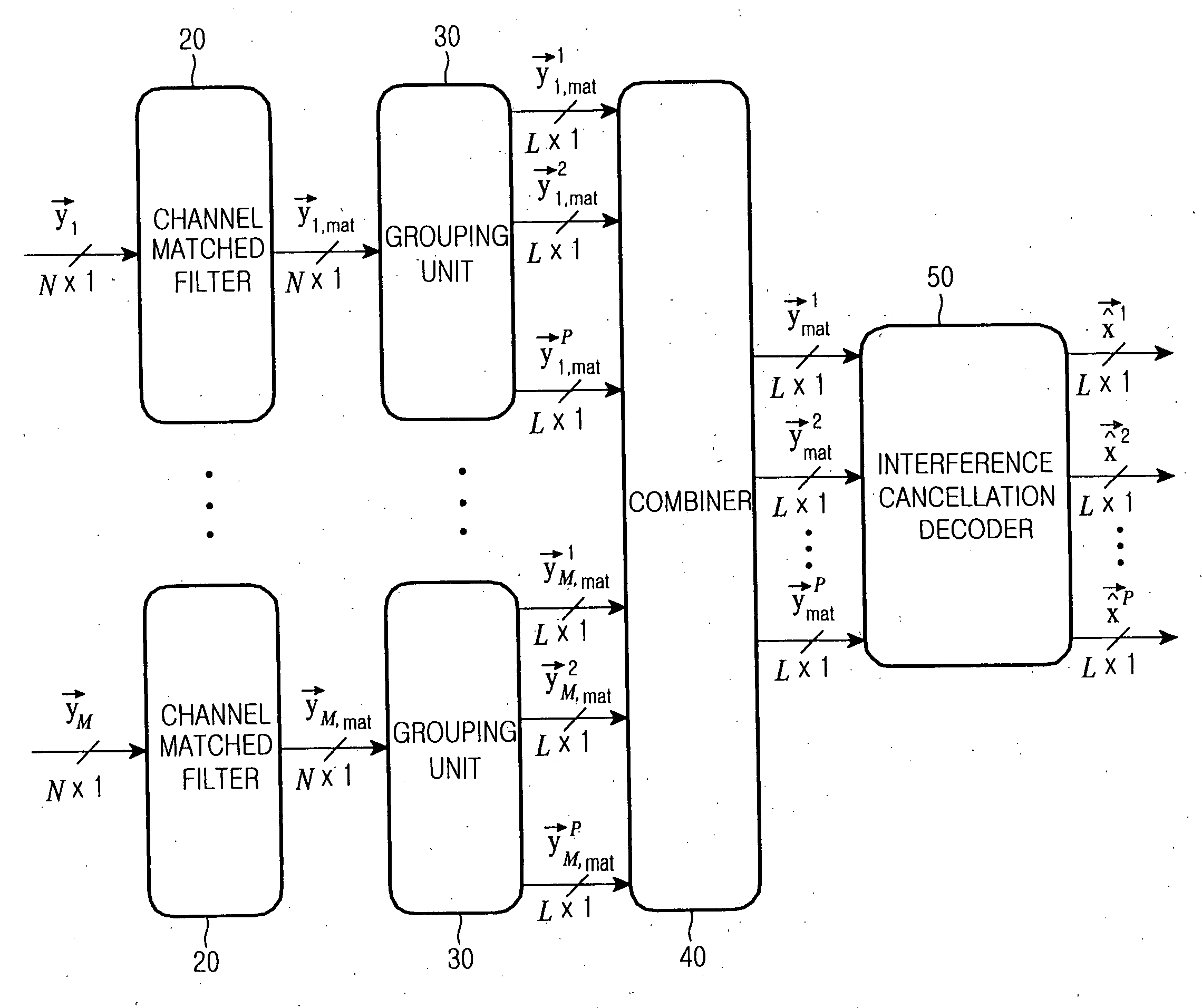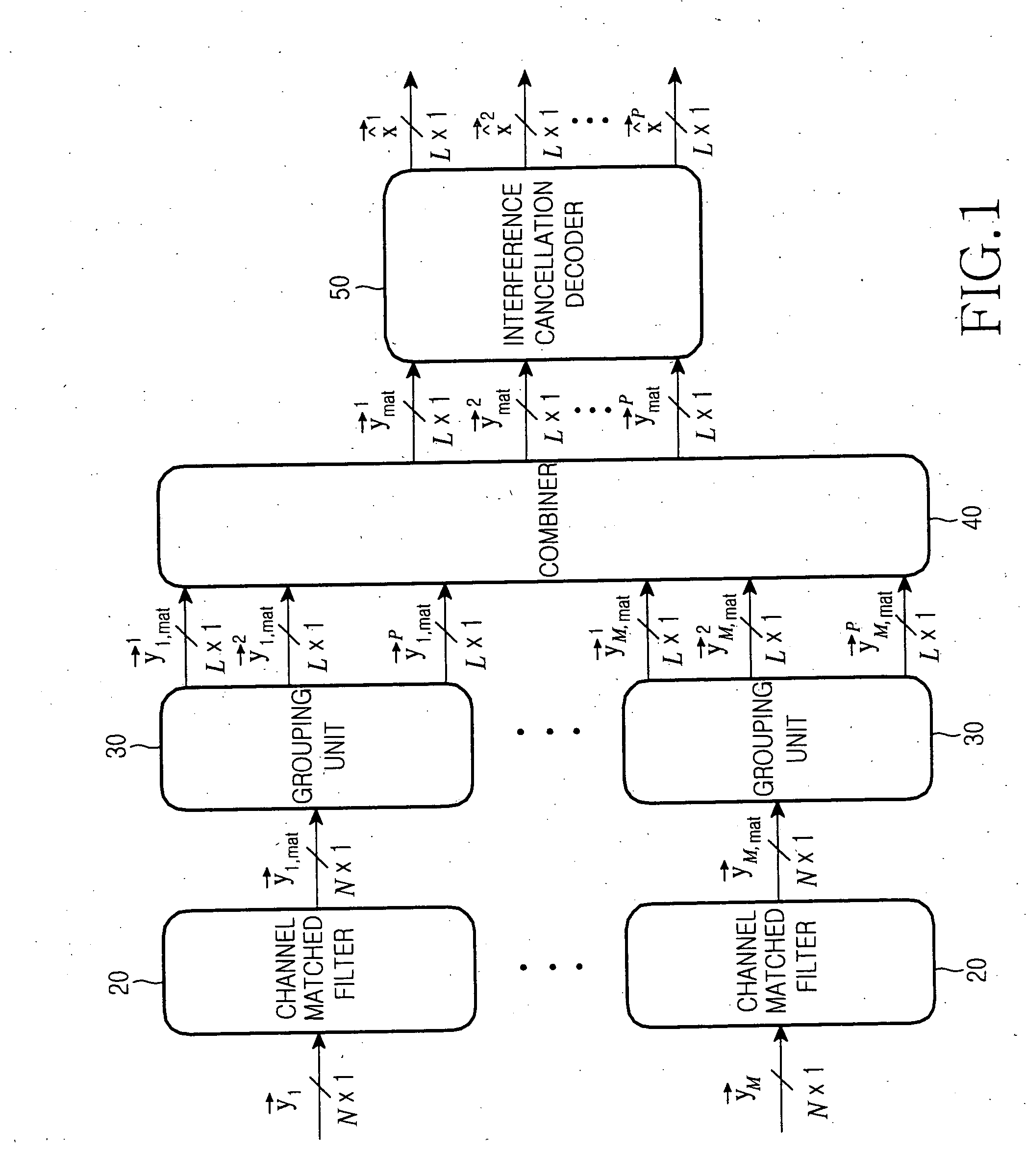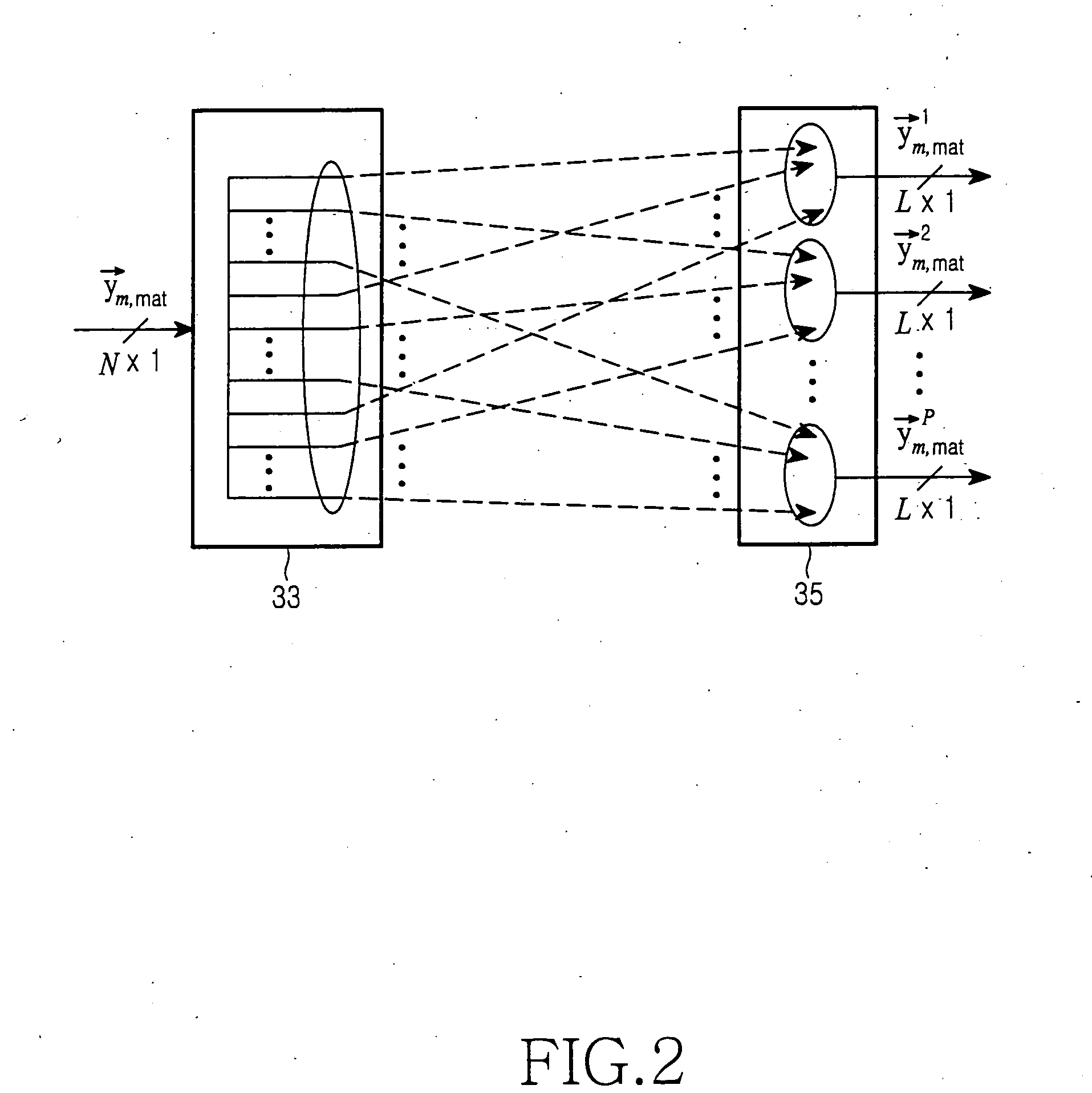Apparatus for decoding quasi-orthogonal space-time block codes
a technology of quasi-orthogonal space and block codes, applied in the field of wireless communication systems, can solve the problems of severe performance loss and high ml decoding complexity, and achieve the effect of reducing decoding complexity
- Summary
- Abstract
- Description
- Claims
- Application Information
AI Technical Summary
Benefits of technology
Problems solved by technology
Method used
Image
Examples
Embodiment Construction
[0037] Preferred embodiments of the present invention will be described with reference to the accompanying drawings.
[0038] In a method for decoding quasi-orthogonal space-time block codes (STBCs) in accordance with the present invention, it is assumed that a wireless communication system includes N transmit antennas and M receive antennas, where M≧1 and N≧2.
[0039]FIG. 1 is a block diagram illustrating a decoding apparatus in accordance with a preferred embodiment of the present invention.
[0040] As illustrated in FIG. 1, the decoding apparatus includes a plurality of channel matched filters 20, a plurality of grouping units 30, a combiner 40, and an interference cancellation decoder 50. The channel matched filters 20 perform channel matched filtering on equivalent reception vectors {right arrow over (y)}m (m=1, . . . ,M) and output N-dimensional channel matched filtered vectors {right arrow over (y)}m,mat (m=1, . . . ,M The grouping units 30 generate P L-dimensional sub-channel ma...
PUM
 Login to View More
Login to View More Abstract
Description
Claims
Application Information
 Login to View More
Login to View More - R&D
- Intellectual Property
- Life Sciences
- Materials
- Tech Scout
- Unparalleled Data Quality
- Higher Quality Content
- 60% Fewer Hallucinations
Browse by: Latest US Patents, China's latest patents, Technical Efficacy Thesaurus, Application Domain, Technology Topic, Popular Technical Reports.
© 2025 PatSnap. All rights reserved.Legal|Privacy policy|Modern Slavery Act Transparency Statement|Sitemap|About US| Contact US: help@patsnap.com



